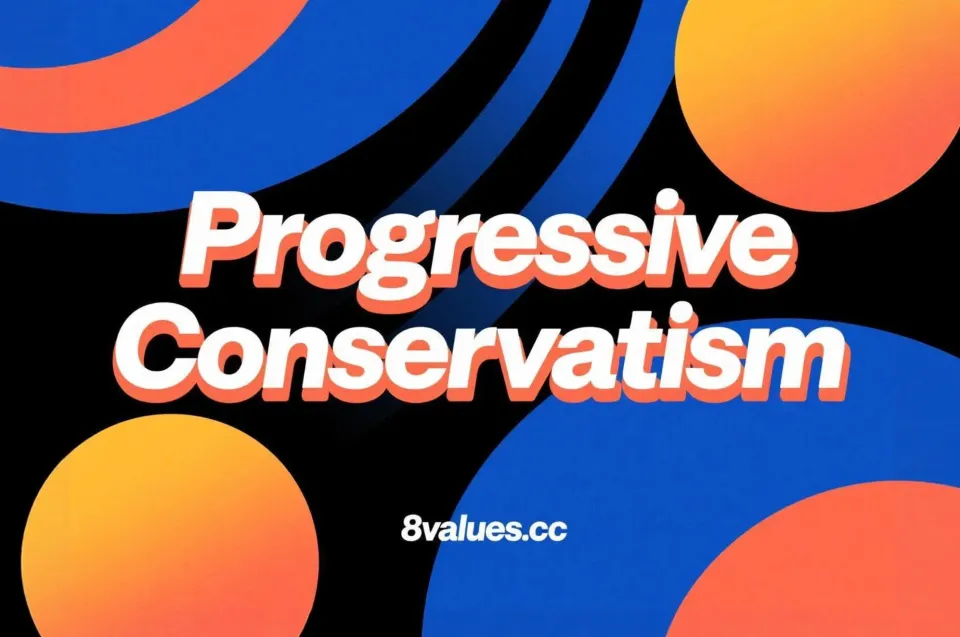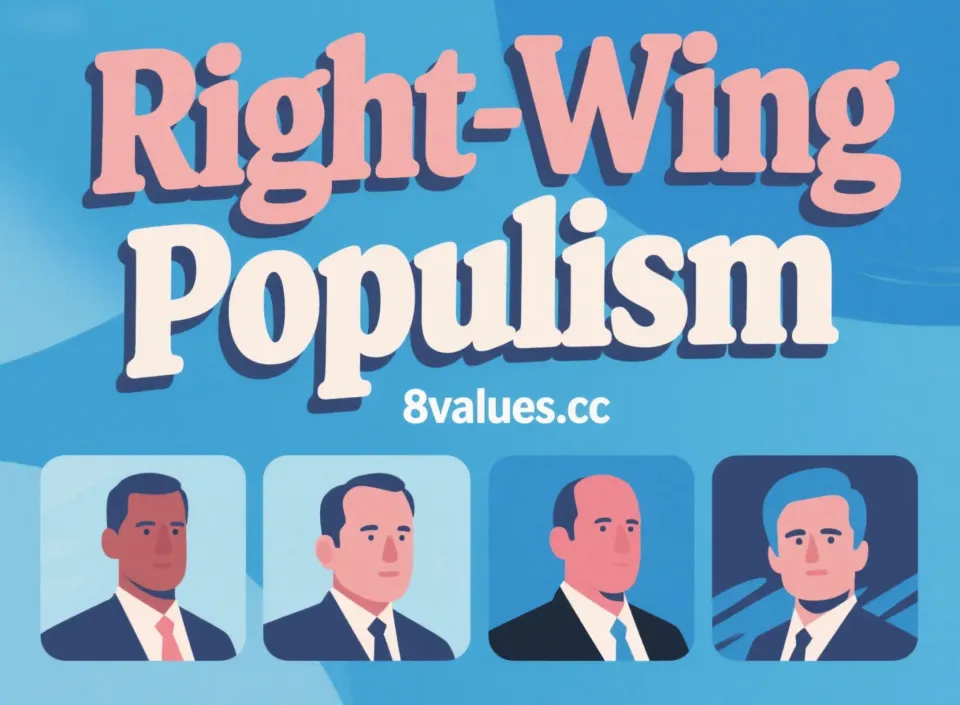An in-depth interpretation of the political trend of Progressive Conservatism
Progressive Conservatism is a hybrid political ideology that combines conservatism and progressivism. It emphasizes achieving social equity and development through progressive reforms on the basis of maintaining social stability. This article explains in detail its core political concepts, historical origins, global practice cases, and positioning in the contemporary political spectrum to help you better understand the complexity of this trend of thought.
The field of political thought is complex and diverse, and there is rarely a black-and-white position. Many political philosophies are dedicated to finding a balance between maintaining social traditions and promoting the progress of the times. Among the many political ideologies, “Progressive Conservatism” is a striking hybrid trend that attempts to reconcile the seemingly contradictory demands of the left and right.
If you are curious about your position on the ever-changing political spectrum, this website provides a variety of testing tools, including the 8 Values political orientation test , the 9 Axes political ideology test, etc., to help you clearly position your political values. This article will give Official Blog readers a comprehensive introduction to all things progressive conservatism.
The Origin and Core Definition of Progressive Conservatism
Progressive Conservatism is a hybrid political ideology that originates from conservative thought but incorporates progressive institutional policies and reform concepts. The core of this idea is: while supporting the market economy, it emphasizes the importance of government intervention to promote the common good and the improvement of human and environmental conditions.
This trend of thought is not a single fixed theoretical system, but a "mixed trend of thought" formed in different countries and periods according to practical needs. Its core logic has a high degree of consistency:
- Staying true to conservative roots: Progressive conservatives support the importance of preserving national identity, social order, and traditional values such as family and community. They respect market freedoms and private property rights, but oppose radical anti-market intervention stances and recognize the necessary role of government in market regulation.
- Absorb the propositions of progressivism: pay attention to social equity and support alleviating the gap between rich and poor through policies, such as improving social security and promoting the popularization of public education. Advocates for reform through a moderate and gradual approach (gradual improvement), and opposes radical revolution or complete subversion.
Key policy propositions of progressive conservatism
Progressive conservatism is mainly reflected in the following aspects at the policy level:
- Social Safety Net: In order to solve the problem of poverty, this ideology emphasizes the importance of social security and supports the establishment of "social safety net" to protect those citizens who are in trouble.
- Limited wealth redistribution: Progressive conservatism supports limited wealth redistribution to help reduce the huge differences between rich and poor and achieve a certain degree of fairness.
- Market regulation: believes that the government should be allowed to regulate the market to safeguard the common interests of consumers and producers.
- Progressive reform: The purpose of reform is not to abandon tradition, but to "preserve the essence of tradition", that is, to "change for the sake of preservation." This pragmatic orientation makes it focus on the actual effects of policies rather than ideological purity.
“One Nation Conservatism” and its Early Ideological Origins
As a unique ideology, the prototype of progressive conservatism first appeared in the "One-Nation Toryism" principle of British Prime Minister Benjamin Disraeli in the 19th century .
Disraeli believed that a society must work together as "a nation" and that nobles and wealthy people had a duty to help those who were poor and disadvantaged (this was called "noblesse oblige" or Paternalism). The Disraeli government passed a series of laws in the 1870s to improve workers' housing and public health conditions, embodying the early practice of progressive conservatism.
In Britain, in addition to Disraeli, many prime ministers such as Stanley Baldwin, Neville Chamberlain, Winston Churchill, Harold Macmillan and David Cameron are considered representatives of progressive conservatism. Winston Churchill once said that a " strong Conservative party with an overwhelming majority and moderate and even progressive leadership" might well achieve the goals of Disraeli and his father.
The historical development of Europe and the United States
The ideas of progressive conservatism have far-reaching historical influence in different countries:
- Catholic Social Teaching: In 1891, the Catholic Church issued the Encyclical Encyclical Rerum Novarum (Rerum Novarum), which advocated a progressive conservative doctrine called "Catholic Social Teaching" or "Social Catholicism" to address issues related to poor workers at the time.
- Germany: This trend of thought in Germany can be traced back to the 1880s, when the then German Prime Minister Otto von Bismarck (Otto von Bismarck), out of conservative motives, established various progressive social welfare programs, including domestic health, accident and old-age insurance, in order to keep the working class away from the socialist movement. Prime Minister Leo von Caprivi also pursued a progressive conservative agenda known as the "New Curriculum." After World War II, Germany's "social market economy" system combined the free market with a strong social welfare system and also embodied the ideas of progressive conservatism.
- United States: In the United States, Theodore Roosevelt is a key figure associated with the progressive conservatism tradition. He believed that "smart progressivism and smart conservatism always go hand in hand." Roosevelt's term in office introduced "Fair Deal," a domestic program focused on breaking up monopolies and protecting consumers and environmental resources while preserving the basic framework of capitalism.
- Canada: Canada's largest conservative movement was officially named the Progressive Conservative Party of Canada from 1942 to 2003. The party has promoted universal health insurance and environmental protection policies while adhering to fiscal discipline and free market principles.
The Practice and Challenges of Contemporary Progressive Conservatism
In contemporary politics, the concept of progressive conservatism is often used as a strategy for mainstream conservative parties to reshape their image and win support from a wider range of voters.
‘Modern Conservatism’ in Britain
Former British Prime Minister David Cameron branded his political philosophy as "progressive conservatism" in an attempt to distance himself from Thatcherism, which was less popular with voters. His vision for contemporary progressive conservatism includes:
- A fair society: Helping people escape poverty and end their suffering throughout their lives.
- A society of equal opportunities: everyone has the right to “write their own chapter of life”.
- A greener, more beautiful society: leaving an environmentally sustainable, clean and beautiful planet for future generations.
- A safer society: people are protected from threats and fear.
In practice, the Cameron government has promoted progressive policies such as supporting the legalization of same-sex marriage and investing in green energy, while emphasizing fiscal discipline. His "Big Society" concept attempts to encourage voluntary organizations, churches and neighborhood mutual aid to take over public services to strengthen community bonds and reduce reliance on big government.
The pragmatic line in American politics
In the United States, progressive conservatism is seen as a way for the Republican Party to break away from the shackles of right-wing ideology and return to the pragmatic tradition of Lincoln and Theodore Roosevelt. This trend of thought believes that the Republican Party should move closer to the center on economic issues while maintaining tradition on social issues.
This view emphasizes the following points and aims to win over a wider range of supporters of the "American Dream":
- Economic Mobility: Focus on intergenerational economic mobility and reform education, immigration and regulatory policies to remove barriers to advancement for ordinary people. Some argue that the Republican Party should, like progressive conservatives, learn from the successful experiences of countries such as Denmark and Canada in improving mobility and equality, such as limiting college tuition and providing a national catastrophic health care plan.
- Anti-corruption: The Republican Party should make anti-corruption a core issue, including limiting lobbyist contributions to politicians and closing the “revolving door” between Congress and the lobbying industry.
- Restoring Republican Virtue: Calling for the restoration of "Republican Virtue", that is, citizens should have the selfless desire to promote the common interests of the country as a whole, rather than focusing only on the interests of specific groups or themselves.
Progressive conservatism and the political spectrum
Progressive conservatism is often seen as a center-right position on the political spectrum, but the hybrid nature of its core values makes it difficult to easily classify. It seeks to avoid radical reform (left-wing tendencies) and stubborn conservatism (traditional right-wing tendencies).
On social issues, progressive conservatism advocates accepting cultural pluralism and social inclusion while respecting traditional moral and cultural values. For example, a modern progressive conservative might support same-sex marriage but emphasize that this should be done with respect for religious freedom. This contrasts with the emergence of “pink capitalism” (or rainbow capitalism) in current politics, in which business entities incorporate progressive social issues into brand strategies to cater to specific consumer groups. Progressive conservatives are more concerned about achieving social equity through institutional reform (for example, the LeftValues left-wing political values test focuses on economic equality), while also respecting traditional culture and order (for example, the RightValues right-wing political spectrum test focuses on authority and tradition).
Advantages and Challenges
The advantage of progressive conservatism lies in its pragmatism, which can attract a wider range of social groups and reduce the risk of social unrest by integrating tradition and change. Its "incremental reform" model ("small steps and quick runs") helps absorb social pressure and extend the life of the system.
However, this trend of thought also faces criticism :
- Conflicting ideas: Attempting to reconcile opposing ideas has sometimes led to criticism that it lacks a clear position, and it is easy to be regarded as a "fence-rider" in a highly polarized political environment.
- Too slow: On “countdown” issues such as wealth disparity or the climate crisis, incremental reforms may be criticized as boiling frogs in lukewarm water and inefficient.
- Reliance on elite virtue: The success of this model depends largely on whether those in power possess the “selfless virtue” of promoting common interests.
In short, progressive conservatism provides a moderate and inclusive political path that emphasizes seeking progress in stability and responding to the challenges of modern society through pragmatic and measured reforms. It reminds us that political ideologies are not static but need to constantly evolve to adapt to the needs of the times. If you want to explore your personal political leanings, please visit the 8Values Quiz political ideology test official website to provide various popular political values and ideological leaning tests .






